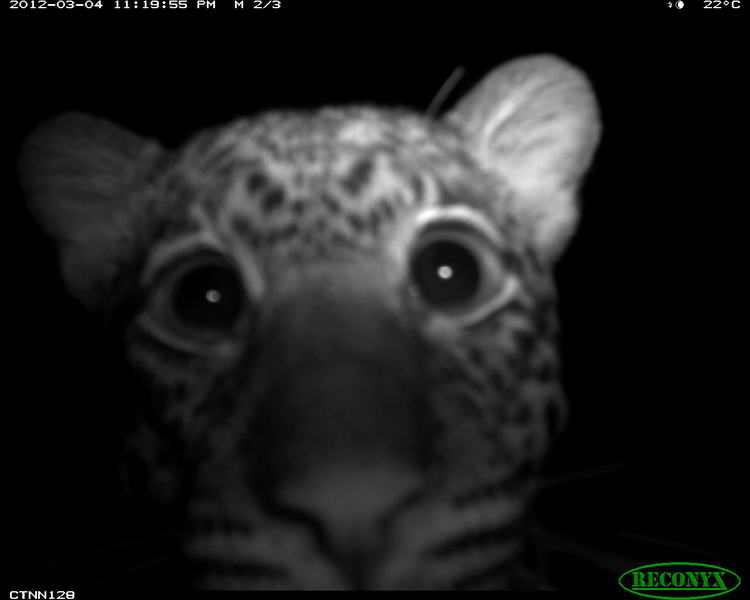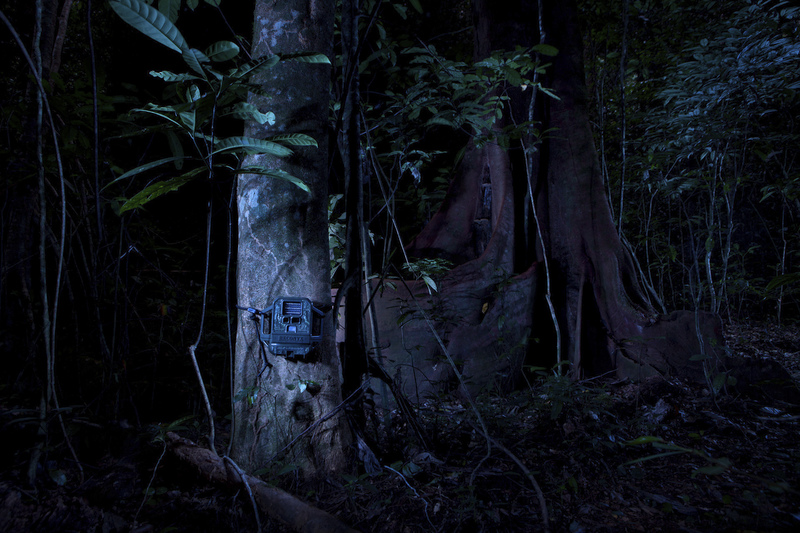Animal 'Selfies' Reveal Amazing Biodiversity in Tropical Forests

Amid tropical reserves across the globe, a network of motion-activated cameras monitored by conservationists captured millions of photos of unsuspecting wildlife, helping scientists to glimpse the big picture of worldwide biodiversity in these protected areas.
In a study published Jan. 19 in the journal PLOS Biology, scientists wove together threads of a global biodiversity story, told in photos triggered by animals in 15 tropical forests in South America, Africa and Asia.
Approximately 2.5 million "selfies" of unknowing mammals and birds were gathered from 1,000 camera traps, covering 244 animal species. Then, the photos were analyzed by scientists with the Tropical Ecology Assessment and Monitoring (TEAM) Network, a coalition of researchers representing a number of groups working to preserve animal diversity in the wild, including Conservation International, the Wildlife Conservation Society and the Smithsonian Tropical Research Institute. [Photos: see the animal "selfies" captured by the hidden cameras]
They found that diverse communities of ground-dwelling mammals and birds were showing notable success in protected areas, with 17 percent of the monitored populations increasing and 22 percent remaining stable. About 22 percent showed some decline, and 39 percent were not detected often enough for their populations to be calculated, the researchers reported.
Encouragingly, the study authors further noted that overall species distribution and numbers in the protected areas did not decline during the 3- to 8-year evaluation period.
The study represents groundbreaking use of a specialized analytics system, applied across a network of camera traps to evaluate biodiversity seen though the cameras' eyes, said Jorge Ahumada, executive director of the TEAM Network and a study co-author. "For the first time, we are not relying on disparate data sources, but rather using primary data collected in a standardized way across a range of protected areas throughout the world," Ahumada said in a statement.

Although the study did show declines in some animal populations, it still presents a generally positive outlook for the role of protected areas in preserving not only individual species threatened by human activity, but also the complex webs of diverse animal communities. And species living in tropical forests are especially vulnerable to extinction, Lydia Beaudrot, a professor at the University of Michigan and a study co-author, said in a statement. This makes it even more critical for scientists to track and evaluate the success of protected areas, which Beaudrot called "the cornerstone of species conservation," in maintaining animal populations over time.
Sign up for the Live Science daily newsletter now
Get the world’s most fascinating discoveries delivered straight to your inbox.
In fact, the study's results have already helped officials in Uganda's Bwindi Impenetrable Forest to identify the impact of park visitors on a particularly vulnerable species, the African golden cat. When photo analysis showed that the cats were appearing less frequently in certain areas, the park management evaluated recent changes to visitor traffic in that area, and found that it had increased significantly. After they diverted visitors to other trails in the park, sightings of the African golden cats went up.
Tropical forests also serve an important role for the planet, producing oxygen and scrubbing excess carbon from the atmosphere. The balance of species they contain — plants as well as animals — is part of an intricate global infrastructure that contributes to the support of ecosystems beyond the forests' boundaries, the researchers said in the study. This suggests that this type of standardized monitoring can be used alongside established methods to assess threats to vulnerable animal populations and ecosystems, and assist in the creation of conservation plans, they added.
"With this data, we have created a public resource that can be used by governments or others in the conservation community to inform decisions," Ahumada said.
Follow Mindy Weisberger on Twitter and Google+. Follow us @livescience, Facebook & Google+. Original article on Live Science.

Mindy Weisberger is an editor at Scholastic and a former Live Science channel editor and senior writer. She has reported on general science, covering climate change, paleontology, biology and space. Mindy studied film at Columbia University; prior to Live Science she produced, wrote and directed media for the American Museum of Natural History in New York City. Her videos about dinosaurs, astrophysics, biodiversity and evolution appear in museums and science centers worldwide, earning awards such as the CINE Golden Eagle and the Communicator Award of Excellence. Her writing has also appeared in Scientific American, The Washington Post and How It Works Magazine. Her book "Rise of the Zombie Bugs: The Surprising Science of Parasitic Mind Control" will be published in spring 2025 by Johns Hopkins University Press.









